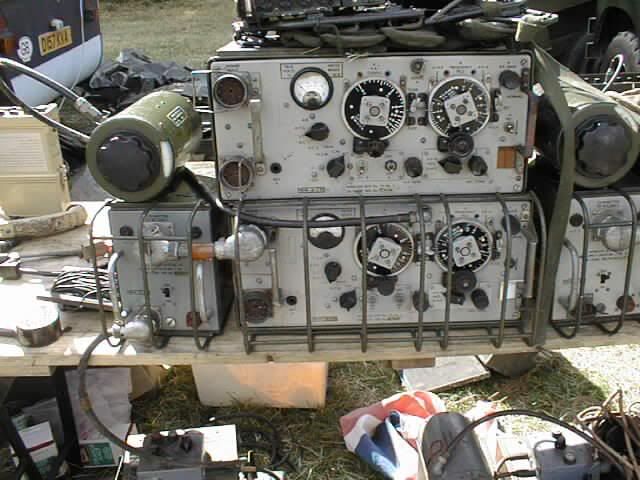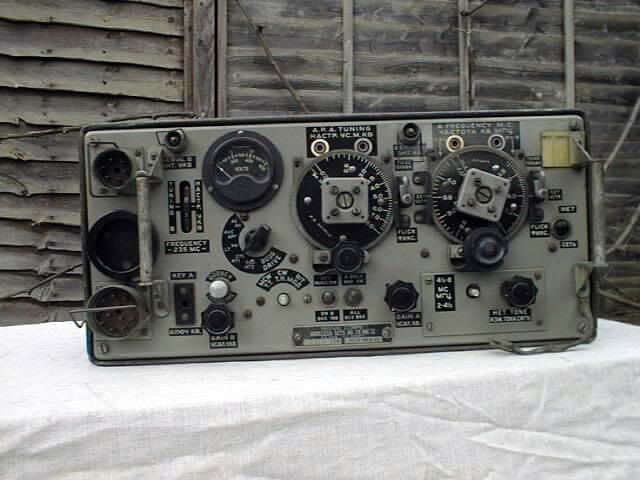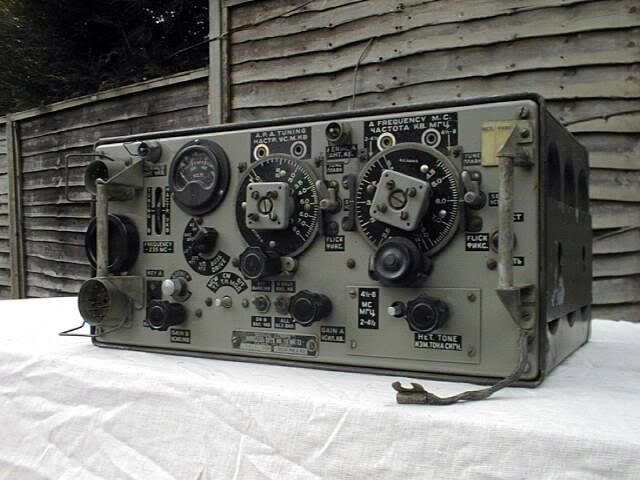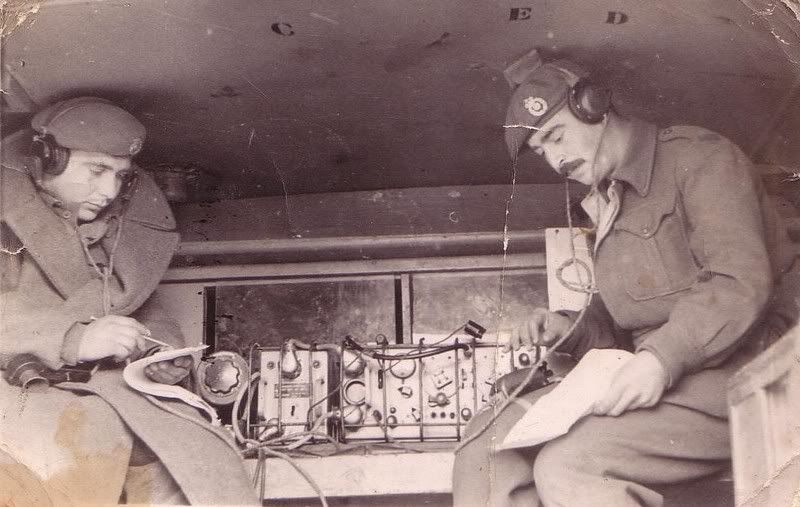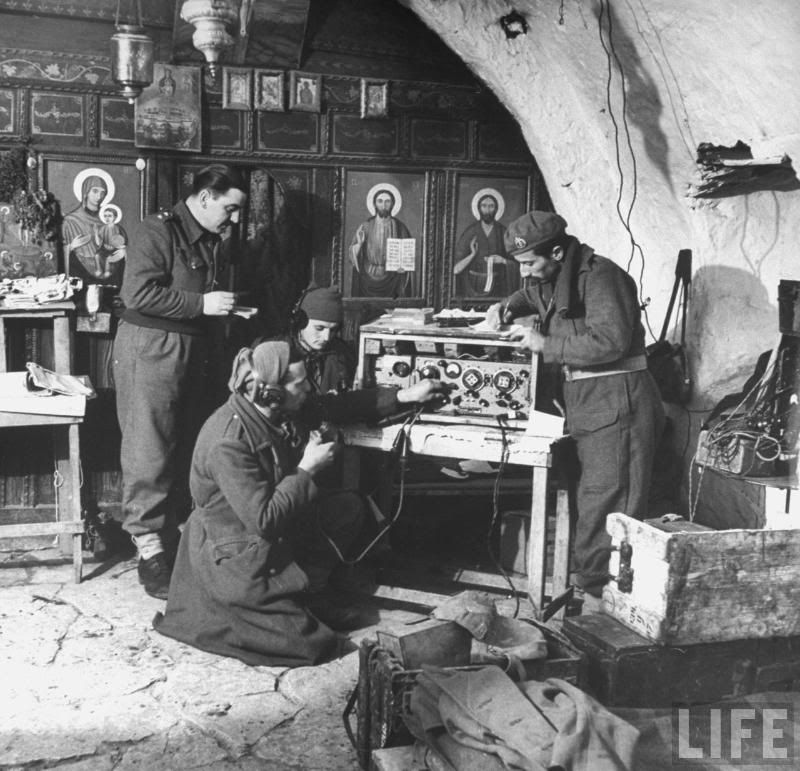Ο ανωτέρω τύπος ασυρμάτου χρησιμοποιήθηκε από τον Ελληνικό Στρατό από το 1942 έως και το 1952, δλδ στην Μέση Ανατολή, στην Ιταλία και στον Εμφύλιο.Wireless Set No. 19
The Wireless Set No. 19 was a World War II mobile radio transceiver designed for the British Army to give armoured troops reliable communications.
Specifications
The set provided HF inter-tank and tank-to-HQ radiotelephone, CW and MCW communications, VHF inter-tank communications, and an intercom facility for a tank’s crew. The HF ‘A’ setting was tuned to receive and transmit with a single dial and featured a ‘flick’ switch for rapidly changing between two frequencies; a device still used in aircraft today.
Dimensions: 17.5" x 8.5" x 2.5"
Weight: 40 lb.
Frequency range: 'A' setting 2-8 MHz; 'B' setting 229-241 MHz. Master Oscillator controlled.
Modes: AM, MCW, CW.
RF output: 'A' setting 2.5-9 watts.
Range: 'A' setting up to 15 miles; 'B' setting 1000 yards - 3/4mile.
History
Wireless Set No. 19 was developed in 1940 by the British War Office's Signals Experimental Establishment and by Pye Radio. The Pye model was adopted then very quickly replaced with a MK II model to bring it up to required specifications in 1941, and then by the more efficient MK III model in 1942. These improved sets were particularly significant in the fast-moving armoured fighting in the Western Desert.
Canadian production of the No. 19 Mk II began in 1942. Improvements were introduced to the British design, but uniformity was maintained to accomplish interchangeability of components, especially the valves. Three Canadian companies manufactured the main No. 19 transceiver: Northern Electric Co., Canadian Marconi Co. and RCA Victor. Most Canadian sets featured English / Cyrillic lettering on the front panel as they were produced under a Lend-Lease contract to supply the Soviet Red Army.
The VHF ‘B’ setting was phased out in the 1950s as the Larkspur range of VHF FM equipment came into service. The Royal Armoured Corps replaced their modified No 19 Sets with the very similar C12 in the mid-50s, and this in turn was replaced by the C13 when it was developed and produced. RF Amplifier No. 2 increased the range to 45 miles. Wireless Set No. 19 TH was an experimental trials model for the Dutch Army, developed after World War II. Based on the British 19 Set MK III, with IC and B set removed, it had an extra frequency range extending the coverage up to 12 MHz.
After World War II, the Wireless Set No. 19 was adopted in other countries, for example the Canadian No. 19 MK II was used in the Swedish Army and the refurbished Canadian No. 19 MK III by the Italian Army. Also after World War II a number of Canadian No. 19 MK III sets were refurbished for use in the British Army. Today the Wireless Set No. 19 is collected, restored and operated by vintage amateur radio enthusiasts.
http://en.wikipedia.org/wiki/Wireless_Set_No._19
Από το 1952 περιορίσθηκε η χρήση τους λόγω της εισαγωγής αμερικανικών ασυρμάτων ώσπου το 1960 αποσύρθηκε οριστικά.
Ο φίλος Στέλιος μας είχε δώσει μια πολύ ωραία φωτό ενός ΜΒ με τον Νο19:
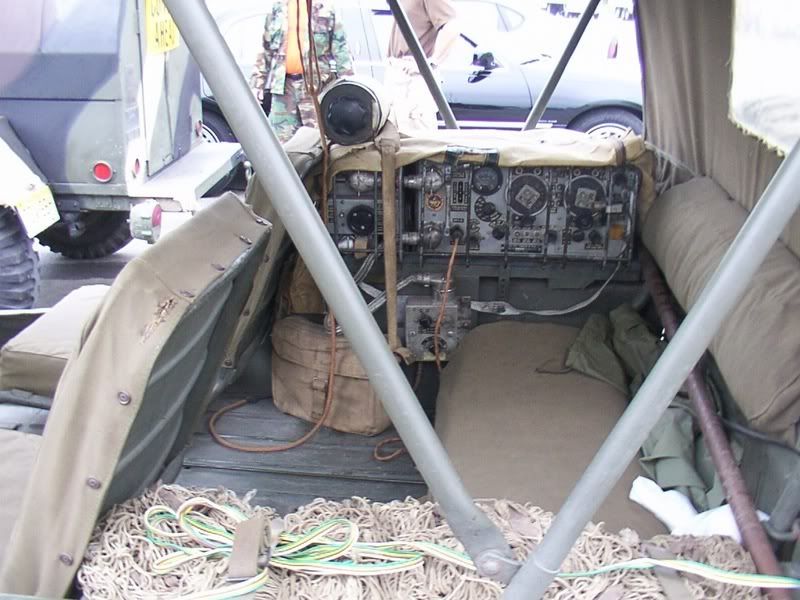
Πριν λίγες μέρες έγινα κι εγώ κάτοχος ενός από τους 115.000 ασυρμάτους που κατασκευάστηκαν κατά τον WWII:




